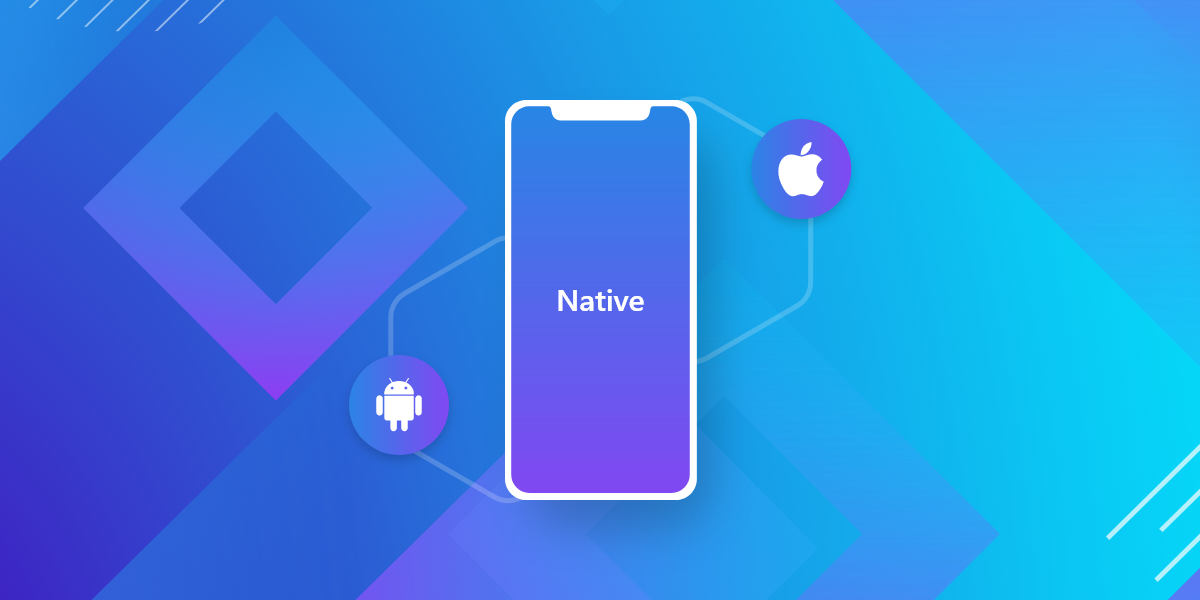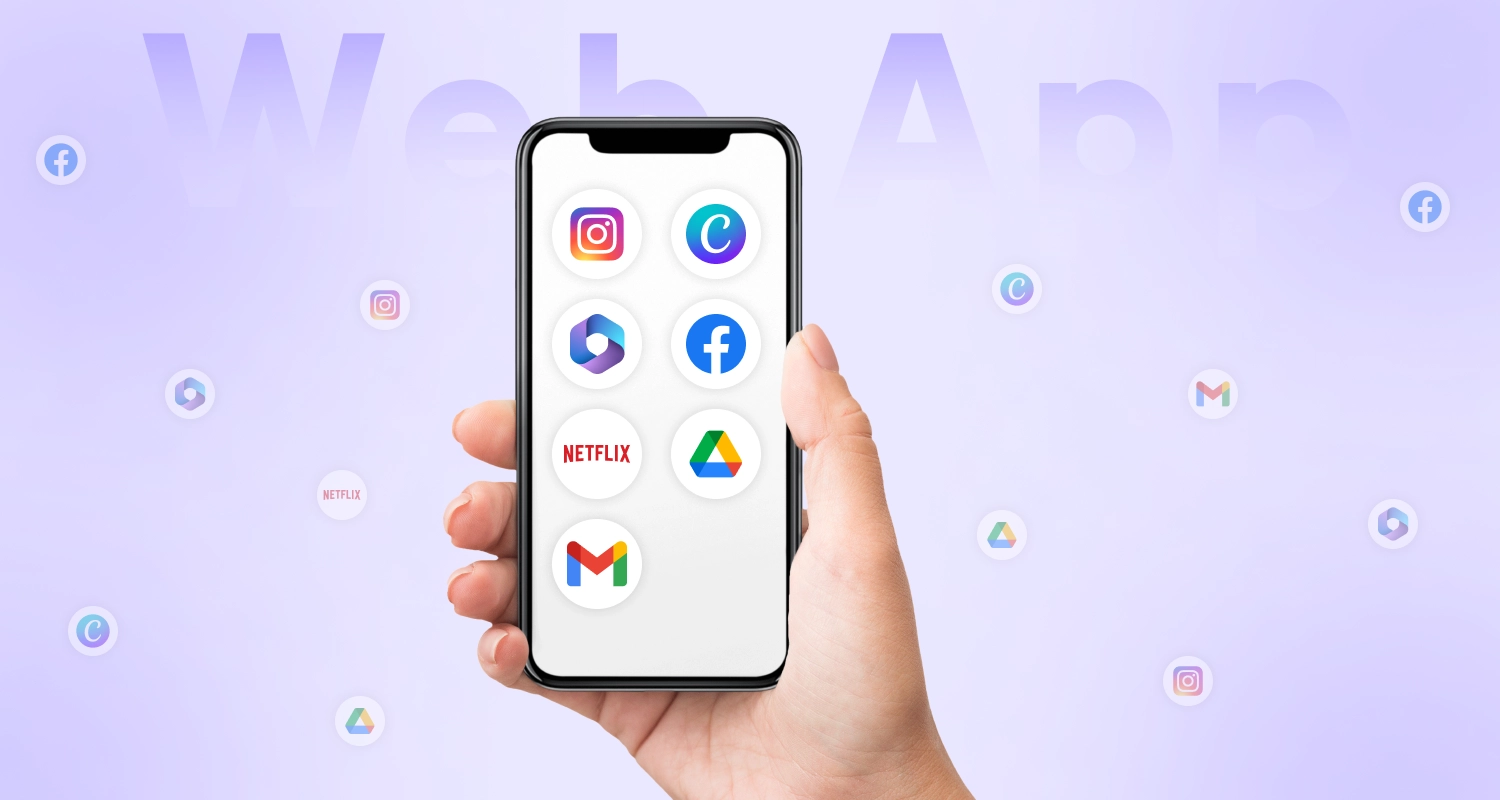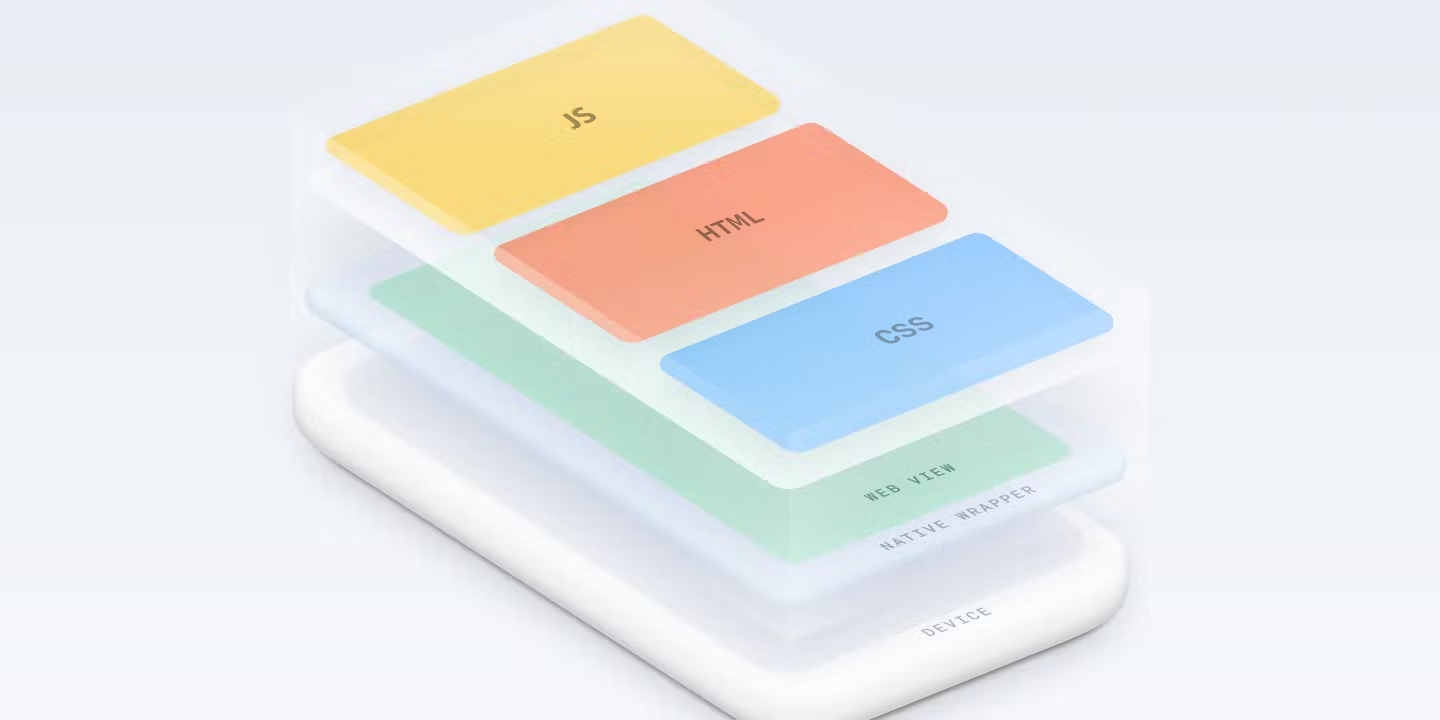The development of mobile apps hinges on choosing from three types of mobile application: native, web, or hybrid, each with unique advantages and challenges. This choice is crucial as different apps require distinct functionalities. For instance, the rise of in-app advertising offers a platform for third-party marketing, making apps valuable marketing tools.
However, to achieve high user engagement and a strong return on investment, developers must understand the nuances of each app type and its sub-categories. This knowledge is key to selecting the most suitable category for various mobile apps. Thus, our article aims to clarify the different types of mobile application and their uses, particularly in-app launching and marketing, providing insights through research and examples.
Table of Contents
What Is a Mobile Application?
A mobile application is defined as a type of software that can be installed and run on computers, tablets, smartphones, or other electronic devices. Most mobile applications have specific and narrow functionalities.
For example, a food delivery mobile application can be designed only for a user to receive food delivered from local restaurants and cannot be used for anything else such as shopping for groceries or making restaurant reservations. There are millions of apps available in different categories like business, productivity, shopping, and scheduling.

Apps can be particularly important for businesses for a number of reasons, including:
- Help business owners quickly deploy software that helps companies operate more efficiently.
- Cost savings than other types of software.
- Expand the reach of a business.
- Increase a company’s productivity.
- Allow employees to perform business functions outside of the office.
- Offer a number of services for businesses, including accounting, inventory management, and CRM software.
The Main Types of Mobile Application by Technology
Mobile app development revolves around three main types: native, web, and hybrid apps. Each type has a unique structure and coding approach, yet they share certain similarities. In this section, we’ll delve into the specifics of each category, comparing and contrasting them. We’ll also discuss the advantages and disadvantages of these different types of mobile apps to provide a comprehensive understanding of their distinct characteristics.
Native Application
What Is a Native Application?
Native App, also known roughly as Native Application – is one of the types of mobile application written specifically for a type of operating system such as iOS, Android, and Windows using the respective programming language. For example, the Android operating system will use the Java or Kotlin programming language, iOS is developed in Swift or Object-C, or on the Windows operating system, it is only suitable for C#.
Technology Used by Native Apps
Native apps are designed to run directly on mobile devices, offering robust performance, high security, and access to advanced features specific to the operating system. This direct integration often results in fewer bugs and enhanced performance capabilities. The technology behind native apps varies depending on the operating system:
- For iOS, native apps are typically developed using programming languages like Swift, Python, and Objective-C.
- Android native apps are most commonly built using Kotlin and Java.
- On the Windows Phone platform, native apps are developed using C# and .NET.

Gaming apps frequently adopt the native app approach due to its benefits. Native gaming apps on platforms like iOS or Android provide faster access times, leverage device systems and cameras effectively, and ensure better security and compliance. This leads to a stable and satisfying experience for players, with the added advantage of scalability and the potential for rapid Return on Investment (ROI) growth.
An example of a successful native gaming app is Pokémon Go. Developed by Niantic, this app quickly achieved significant revenue, grossing $100 million within the first 20 days of its release. Pokémon Go utilized Augmented Reality (AR) technologies, maximizing the capabilities of Google’s technology suite to provide an immersive gaming experience.
What Are the Strengths of the Native Application?
Native applications, designed specifically for a particular mobile operating system, offer several strengths:
- Comprehensive Feature Access: Native apps provide easy and seamless access to a device’s hardware features like the camera, GPS, and recording device, as well as personal functionalities such as file management, making calls, and sending text messages. Their design minimizes the occurrence of errors, especially when fully optimized.
- User Experience and Reliability: Most users prioritize an app’s ease of use and smooth operation over its technological intricacies. Research indicates that around 79% of users will abandon an app if it fails to work properly after one or two attempts. Native apps, with their reliable performance, tend to satisfy user expectations more effectively than other types of mobile applications.
- High Performance for Complex Products: For products requiring high performance and custom features that integrate closely with the platform, native apps are ideal. They offer superior speed and responsiveness, particularly important for intensive tasks or applications.
- Enhanced Data Security: Native apps provide more straightforward and robust security measures, an aspect highly valued by companies focused on protecting their customers’ data. This enhanced security is a crucial advantage in today’s digital landscape.
- Superior Overall Functionality: These apps can fully leverage the device’s hardware, eliminating the need for additional plugins or tools. They can seamlessly connect hardware features with various databases, offering a comprehensive functionality that enhances user experience.
- Efficient Use of Device Resources: Native apps are often lighter in build and consume less device memory compared to their web and hybrid counterparts. This efficiency translates to better performance and less strain on the device’s resources.
What about the Weaknesses of a Native Application?
Despite their advantages, native applications do have certain weaknesses that can impact their usability and development:
- Platform Dependency: One of the main drawbacks of native apps is their operating system specificity. A native app developed for iOS will not run on Android, and vice versa. This limitation necessitates the creation of separate versions for each operating system.
- Increased Development Effort and Costs: Since different codes need to be written for each operating system, this leads to higher development costs and complexities. It also requires developers to be proficient in multiple programming languages, adding to the resource and time investment needed for development.
- Inconsistencies Across Versions: Maintaining consistency across different versions of the app for various operating systems can be challenging. This can lead to disparities in user experience and functionality between the iOS and Android versions of the same app.
- Compatibility with Operating System Versions: The diversity of operating system versions can pose another challenge. Older versions of an operating system may not support the latest native app, leading to issues with installation and usage on older devices. This version fragmentation can hinder the widespread adoption of native apps.
Web Application
What Is Web Application?
A Web Application (also known as a Progressive Web App) is a computer program that uses a web browser and web technology to perform tasks through the Internet.

Web applications use a combination of server-side scripts (PHP and ASP) to handle data, retrieve information, and client-side scripting (JavaScript and HTML) to present information to the user. This allows users to interact using online forms, content management systems, shopping carts, and more. In addition, web applications also allow employees to create documents, share information, add work on projects, and work on common documents regardless of location or device.
Understanding What is a web application? is not enough, you should also know how this versatile application works to make the management process more smooth.
How Do Web Apps Work?
Web applications are usually encoded in browser-enabled languages such as JavaScript and HTML because these languages rely on the browser to render the executable. Some applications are dynamic, requiring server-side processing. Some other web applications are completely static without being processed on the server.
Web Application requires the webserver to manage requests from the client, the application server to perform the requested tasks, and sometimes a database to store information. Application server technologies range from ASP.NET, ASP, ColdFusion, PHP, and JSP.
Here’s the typical web application’s operating sequence:
- The user activates the request to the web server over the Internet, through a web browser or user interface from the application.
- The web server forwards the request to the appropriate web application server.
- The Web application server performs the requested task, such as querying the database or processing the data, and then produces the result according to the requested data.
- The web application server sends the results to the web server with the requested information or the processed data.
- The web server responds to the client with the requested information appearing on the user screen.
Web App Example
Web applications include online forms, shopping carts, word processors, spreadsheets, video and image editing, file conversion, file scanning, and email programs. Popular applications include Google Apps and Microsoft 365.

Google Apps for work include Gmail, Google Docs, Google Sheets, Google Slides, online storage, etc. Other functions include the online sharing of documents and calendars. This allows all team members to access the same version of the document.
7 Main Benefits That Web Application Brings to a Business
Web applications offer several key benefits to businesses, making them a popular choice for many companies. Here are seven main advantages:
- Cross-Platform Compatibility: Web applications can run on multiple platforms, regardless of the operating system or device, as long as a compatible browser is available. This universality ensures broader accessibility and user reach.
- Universal Access: Users can access the same instance of a web application at any time from anywhere, facilitating easy collaboration and data consistency.
- No Installation Required: Since web applications are not installed on a user’s hard drive, they eliminate concerns about device storage capacity. This feature makes web apps particularly appealing for devices with limited storage.
- Ease of Installation and Maintenance: Web applications streamline the process by removing the need for cumbersome software installations and updates on the user’s device. All updates can be made directly on the server, simplifying maintenance and support.
- Reduction in Software Piracy: For subscription-based web applications, the risk of software piracy is significantly reduced, as access and usage are controlled through the web.
- Enhanced Security: Web applications offer a higher level of security since they store information on remote servers. Users can securely access the application from any internet-connected device by simply using their URL, username, and password.
- Cost-Effectiveness: They reduce costs for businesses by lessening the need for extensive support and maintenance. Additionally, they lower the hardware requirements for end-users, as web applications typically do not demand high processing power or storage space on the user’s device.
Web apps allow them to exchange information with target markets and execute transactions quickly and securely. However, efficiency only occurs when businesses can capture and store all the necessary data, have the means to process information, and present the results to users.
Disadvantages of Web App
Web applications, while offering numerous benefits, also come with certain disadvantages:
- Dependency on Internet Connectivity: One of the primary drawbacks of web apps is that they require an active Internet connection to function. If you are offline, the web app becomes inaccessible, which can be a significant limitation in areas with poor or no internet connectivity.
- Reduced Functionalities Compared to Native Apps: Web apps generally have fewer functionalities and capabilities compared to native apps. Since they run in a browser and are not directly integrated with the device’s hardware, their ability to leverage advanced features of the device is limited.
- Longer Development Time: Developing a web application can take more time compared to other types of applications. This is often due to the need to ensure compatibility across various browsers and devices, which adds complexity to the development process.
- Security Risks: Web apps can be more vulnerable to security risks since they are accessible through the Internet. Ensuring robust security measures is crucial to protect sensitive data, but this can be more challenging for web apps than for their native counterparts.
Hybrid Application
What Is a Hybrid Application?
The hybrid application is the perfect combination of the advantages of a Native App and Mobile Web. This application is similar to most other types of mobile applications.

They are installed on the phone so you can take pictures, connect with friends through social networks, play entertaining games, or many other useful functions.
Hybrid is an application built on popular Web technologies such as Javascript, HTML, or CSS. The difference between the Hybrid and other types of mobile applications is that this application is stored in a native application using the Web View browser window.
This difference allows Hybrid to access most of the functions of the mobile phone hardware including the camera, phonebook, accelerometer, sound, etc. This is an advantage of Hybrid compared to other applications when not restricted from accessing mobile phone browsers.
Hybrid Application Examples
Hybrid applications combine elements of both native and web apps, and notable examples include Slack and Instagram:
- Slack: This popular communication tool is an example of a hybrid app developed using Electron, which incorporates JavaScript, CSS, and HTML frontend technologies. Its hybrid nature allows for a seamless user experience across different devices and platforms. Slack’s success is evident in its widespread adoption by over 150,000 organizations and generating over $900 million in revenue in the year leading up to April 2021.
- Instagram: Another powerful example of a hybrid app is Instagram, built using React Native. This framework allows Instagram to offer a native-app-like experience across various devices, including phones, desktops, and tablets. The flexibility of the hybrid model has been instrumental in Instagram’s growth and expansion across multiple platforms, contributing to its trajectory towards reaching 2.5 billion users in 2023.
Advantages of Hybrid Application
Hybrid is an application that possesses many outstanding advantages such as:
- Hybrid is an application that only needs to be written once but can be run in many places to maximize cost savings.
- This application can be easily posted to the Play Store or App Store for users to easily download and use.
- A Hybrid App can do many functions that a Native App cannot do.
- The Hybrid has its own embedded browser with applications.
- Hybrid can take advantage of many features available in mobile phone equipment.
- Hybrid App helps web developers use some of AngularJs, CSS, and HTML skills to create mobile applications without having to know Objective-C or Java.
- The development of the Hybrid App is easier than with other applications.
- Maintenance of the Hybrid App is simple and fast, it does not take much time.
Disadvantages of Hybrid Application
Although it possesses many outstanding advantages among types of mobile application, the Hybrid App cannot avoid minor disadvantages such as:
- Hybrid apps run slower than Native Apps.
- In the process of using Hybrid, sometimes it gets jerky.
- The visual interface is less familiar than other applications.
- Certain hardware-related tasks can be difficult to perform.
Final words
This article can help you not only answer the question What are the types of mobile application?, but also help you understand more deeply the value that it brings to your business. Each type of mobile application has different advantages and disadvantages. It is important that you understand them well and always take the time to think about which ones you like and are suitable for you.











